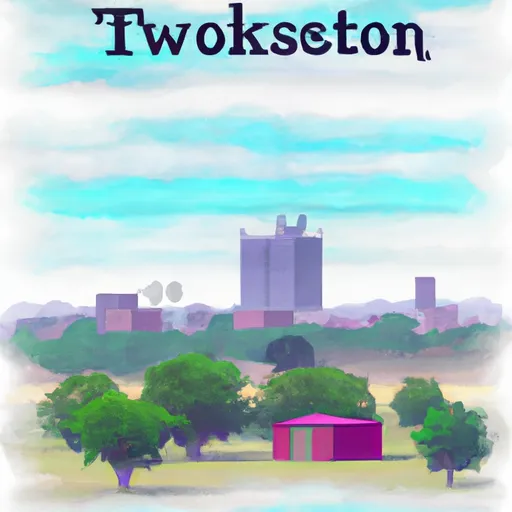-
 Snoflo Premium
Snoflo Premium
Get unlimited access to all our content
With no Ad interruptions! - Start Your Free Trial Login with existing account
Fort-Towson
Eden Index
Climate
8.0
•
Recreation
5.1
•
Community
2.0
•
Safeguard
5.5/10

Fort Towson is a small town located in southeastern Oklahoma, near the Texas border. The climate in Fort Towson is classified as humid subtropical, with hot summers and mild winters. The area receives around 46 inches of rainfall annually, with most precipitation occurring during the spring and summer months. The hydrology constituents of the area include the Red River, Little River, and several nearby lakes. Fort Towson State Park offers outdoor recreation opportunities such as camping, fishing, boating, and hiking. Nearby attractions include the Choctaw Nation Museum and Historic Village and the Ouachita National Forest.
What is the Eden Index?
The Snoflo Eden Index serves as a comprehensive rating system for regions, evaluating their desirability through a holistic assessment of climate health, outdoor recreation opportunities, and natural disaster risk, acknowledging the profound impact of these factors on livability and well-being.
Climate Health Indicator (CHI): 8.0
Fort-Towson receives approximately
1240mm of rain per year,
with humidity levels near 84%
and air temperatures averaging around
17°C.
Fort-Towson has a plant hardyness factor of
8, meaning
plants and agriculture in this region tend to thrive here all year round.
By considering the ideal temperature range, reliable water supplies, clean air, and stable seasonal rain or snowpacks, the Climate Health Indicator (CHI) underscores the significance of a healthy climate as the foundation for quality living.
A healthy climate is paramount for ensuring a high quality of life and livability in a region, fostering both physical well-being and environmental harmony. This can be characterized by ideal temperatures, reliable access to water supplies, clean air, and consistent seasonal rain or snowpacks.
Weather Forecast
Streamflow Conditions
Red-Little
Area Rivers
Red-Little
Snowpack Depths
Red-Little
Reservoir Storage Capacity
Red-Little
Groundwater Levels
Recreational Opportunity Index (ROI): 5.1
The Recreational Opportunity Index (ROI) recognizes the value of outdoor recreational options, such as parks, hiking trails, camping sites, and fishing spots, while acknowledging that climate plays a pivotal role in ensuring the comfort and consistency of these experiences.
Access to outdoor recreational opportunities, encompassing activities such as parks, hiking, camping, and fishing, is crucial for overall well-being, and the climate plays a pivotal role in enabling and enhancing these experiences, ensuring that individuals can engage in nature-based activities comfortably and consistently.
Camping Areas
| Campground | Campsites | Reservations | Toilets | Showers | Elevation |
|---|---|---|---|---|---|
| Lake Winnsboro North Park | 15 | 441 ft | |||
| Winnsboro City RV Park | 20 | 495 ft | |||
| Rusk - Palestine Park | 71 | 447 ft | |||
| Tyler State Park | 104 | 637 ft | |||
| Lake Jacksonville Campground | 17 | 427 ft | |||
| Lake Hawkins County RV Park | 50 | 366 ft | |||
| Lake Quitman Park | None | 414 ft | |||
| Fish Hawke Point | None | 359 ft | |||
| Titus County Park | None | 362 ft | |||
| Governor Jim Hogg RV Park - Quitman | None | 394 ft |
Catastrophe Safeguard Index (CSI):
The Catastrophe Safeguard Index (CSI) recognizes that natural disaster risk, encompassing floods, fires, hurricanes, and tornadoes, can drastically affect safety and the overall appeal of an area.
The level of natural disaster risk in a region significantly affects safety and the overall livability, with climate change amplifying these risks by potentially increasing the frequency and intensity of events like floods, fires, hurricanes, and tornadoes, thereby posing substantial challenges to community resilience and well-being.
Community Resilience Indicator (CRI): 2.0
The Community Resilience Indicator (CRI) recognizes that education, healthcare, and socioeconomics are crucial to the well-being of a region. The CRI acknowledges the profound impact of these elements on residents' overall quality of life. By evaluating educational resources, healthcare accessibility, and economic inclusivity, the index captures the essential aspects that contribute to a thriving community, fostering resident satisfaction, equity, and social cohesion.

